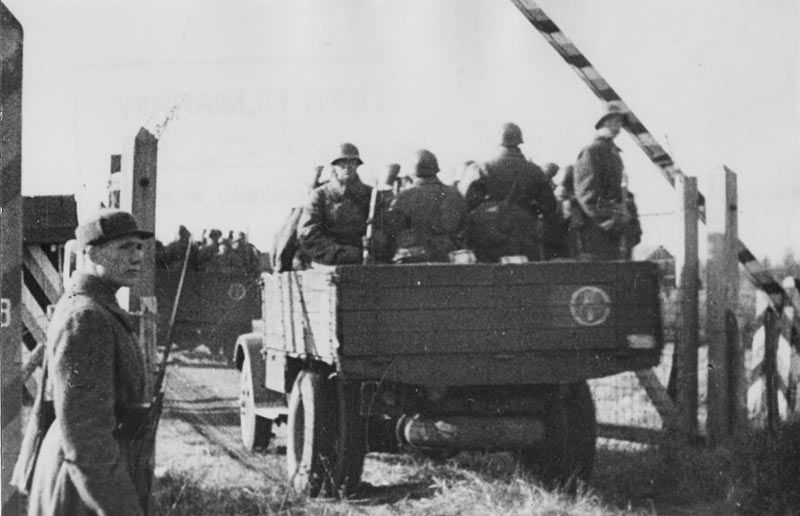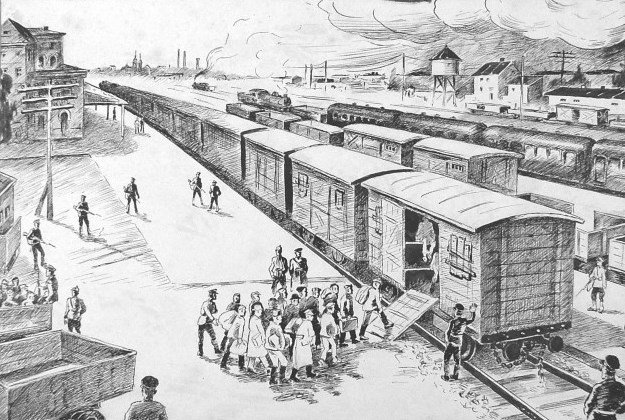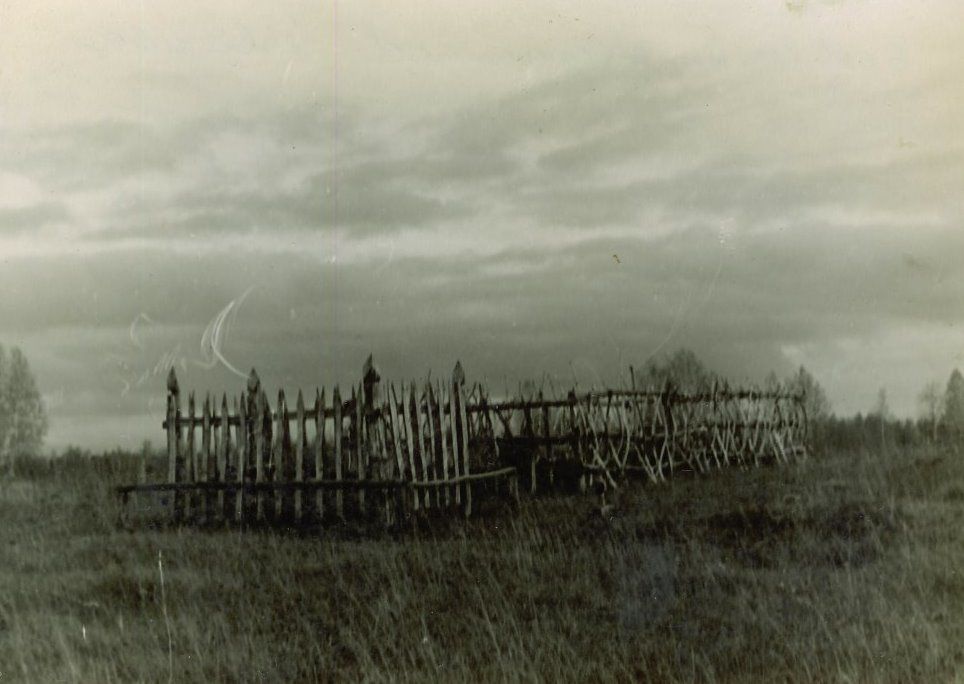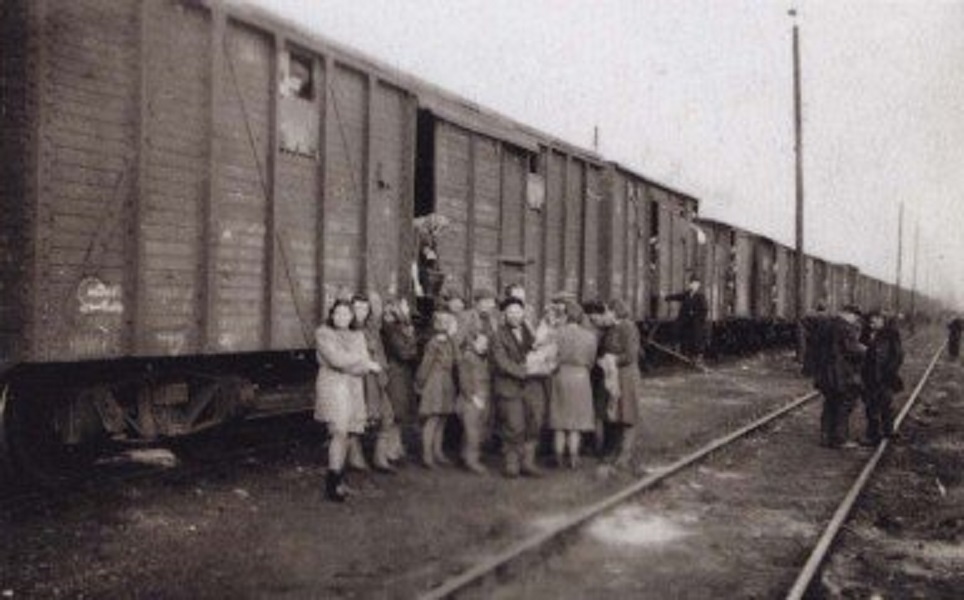On 14 June 1941, the Soviet Union forcibly deported over 10,000 people from Estonia to Siberia – over 7,000 were women, children, and elderly people; the date is now observed as a day of mourning.*
In the summer of 1940, the Soviet Union occupied Estonia, Latvia and Lithuania as a result of the infamous Molotov-Ribbentrop Pact signed between Nazi Germany and the Soviet Union on 23 August 1939. As a result of the Second World War, Estonia lost about 17.5% of its population.
The Soviet occupation brought with it an event that until then had only been read about in history books and which became the most horrific memory of the past centuries – mass deportations that affected people of all nationalities living in Estonia. The two deportations that affected Estonia most, on 14 June 1941 and 25 March 1949, are commemorated annually as days of mourning.
Prologue to the deportations of the 1940s
On 23 August 1939, the Soviet Union and Nazi Germany signed the Molotov-Ribbentrop Pact, whose secret protocols divided Central and Eastern Europe into spheres of influence. On 1 September 1939, Germany launched the Second World War by attacking Poland.
On 17 September, the other party to the pact, the Soviet Union, began to fulfil its role by invading Poland from the east and at the same time concentrating large forces on the borders of the three Baltic states and Finland. Although the Estonian government declared its complete neutrality at the beginning of the Second World War, on 28 September 1939 the Soviet Union used direct military threats to force Estonia to sign a so-called mutual military assistance pact, which led to the establishment of Soviet military bases in Estonia.
Similar treaties were also imposed on Estonia’s southern neighbours, Latvia and Lithuania. The seriousness of Soviet pressure and threats was demonstrated by the fact that when Helsinki refused to conclude such a treaty with Moscow, the USSR began to invade Finland in what is known as the Winter War. The international community responded to this act of Soviet aggression by expelling the USSR from the League of Nations. Unfortunately, this had no effect on the policies of the Soviet Union.

The Soviet Union occupied and forcibly annexed Estonia, along with Latvia and Lithuania, in the summer of 1940 on the basis of the aforementioned Molotov-Ribbentrop Pact. Moscow took advantage of the moment when the rest of the world was distracted by the devastating events in France.
On the initiative of the Soviet authorities, illegal parliamentary elections were held in the Baltic states with falsified results, which were not recognised by the democratic Western countries. The Soviet authorities immediately unleashed a reign of terror that also targeted Estonia’s ethnic minorities, such as Jews and Russians. Special emphasis was placed on the elimination of the nation’s cultural, economic, political and military elite.
During the war, Nazi Germany invaded part of the Soviet Union and occupied Estonia from July 1941 to September 1944, after which the Soviet Union re-established its occupation.
Preparations for repressions
Even before the occupation of Estonia, the Soviet Union had begun preparations to unleash terror on Estonian civil society. As elsewhere, the aim of the communist terror was to suppress any possible resistance from the outset and to instil great fear in the people in order to exclude any organised general resistance movement in the future.
In Estonia, the planned extermination of prominent and active people, as well as the expulsion of large groups of people, was intended to destroy Estonian society and economy. The lists of people to be repressed were drawn up well in advance. From the files of the Soviet security organs, it appears that already in the early 1930s the Soviet security organs had collected data on persons to be subjected to repression.

According to the instructions issued in 1941, the following persons in the territories to be annexed to the Soviet Union and their family members were to be subjected to repression: all members of the former governments, senior state officials and judges, senior military personnel, former politicians, members of voluntary national defence organisations, members of student organisations, persons who had actively participated in anti-Soviet armed struggle, Russian emigrants, members of the security police and police officers, representatives of foreign companies and, in general, all persons with contacts abroad, entrepreneurs and bankers, clergymen and members of the Red Cross.
About 23 per cent of the population belonged to these categories. In reality, the number of those actually subjected to repression was much higher, as a large number of people not on the lists were also victims of the score-settling.
The Soviet security organs began their repressive activities in Estonia even before its formal annexation by the Soviet Union during the occupation. In June 1940, people were arrested for political reasons, and from then on the number of arrests increased.
On 17 July 1940, the last commander-in-chief of the Estonian Defence Forces, Johan Laidoner, and his wife were exiled to Penza. On 30 July 1940, the President of the Republic of Estonia, Konstantin Päts, and his family were exiled to Ufa. Both General Johan Laidoner and President Konstantin Päts died in Soviet captivity.
Mass deportations begin
The preparations for the mass deportations began at the latest in 1940 and were part of the overall violence directed against the territories occupied by the Soviet Union in 1939-1940. The Ukrainian and Belarusian territories were the first to be affected by deportations.

The first written reference to the exile of Estonians to Siberia can be found in the papers of Andrei Zhdanov, Stalin’s commissar who oversaw the destruction of Estonia’s independence in the summer of 1940. Describing the Secretariat of the Central Committee of the All-Union Communist Party (Bolsheviks) in the autumn of 1940, Moscow’s local representative, Vladimir Bochkaryov, demanded that the “anti-Soviet element” be expelled from the borders of the Estonian Soviet Socialist Republic.
Concrete preparations for the deportations began in the winter of 1940-1941. On 14 May 1941, the Central Committee of the All-Union Communist Party (Bolsheviks) and the Council of People’s Commissars of the Soviet Union issued a top secret directive, “Directive on the Deportation of the Socially Alien Element from the Baltic Republics, Western Ukraine, Western Belorussia and Moldavia”.
14 June 1941
The first deportation raid began on the night of 13 June and early morning of 14 June. Families who had gone to bed on Friday night, unaware that anything bad was about to happen, were awakened in the early hours of the morning by banging on their doors. A decree was read to them declaring that they were under arrest or subject to deportation from their homes without any legal process or court decision. All their possessions were declared to be confiscated. They were given one hour to pack.
A few hours after the deportations began, the first lorries arrived at the railway sidings. A total of 490 wagons had been reserved for this purpose. The search for those to be arrested or deported continued until the morning of 16 June. Those carrying out the deportations behaved with extraordinary cruelty: even pregnant women and seriously ill elderly people were packed into overcrowded cattle cars.
According to an order issued from Moscow on 13 June, more than 10,000 people were deported from Estonia between 14 and 17 June 1941. More than 7,000 women, children and elderly people were among those deported. The scale of the deportation is indicated by the fact that more than 25% of all those deported in June 1941 were minors (under 16 years of age).
The deportations also severely affected Estonia’s Jewish population – more than 400 Estonian Jews, about 10% of the Estonian Jewish population, were among those deported.
As the first trains of deportees arrived at their destinations, the next wave of deportations was being prepared by the Soviet authorities in Estonia. However, the German invasion of the Soviet Union prevented this from happening. Due to the rapid advance of the front, a second deportation was only carried out on the island of Saaremaa.

At the end of 1941, investigative commissions began to operate in Soviet prison camps, conducting on-site interrogations and issuing verdicts that resulted in hundreds of prisoners being shot. By the spring of 1942, of the more than 3,000 men sent to the camps, only a few hundred were still alive.
The fate of the women and children sent to the remote regions of the Kirov and Novosibirsk oblasts was also terrible. Many of the deportees died from cold, hunger and hard labour. In all, 4,331 people, or less than half of those deported in 1941, ever returned home. In the course of the 1941 deportation, about 95,000 people from Estonia, Latvia, Lithuania, Poland and Bessarabia (Moldavia) were deported to Russia in one week.
Witnessing the harsh fate of the deportees
Several memoirs and documents bear witness to the harsh fate of the deportees, including the diary kept by ten-year-old Rein Vare between 1941 and 1944. The diary describes the deportation to Siberia and his daily experiences.
With adult seriousness, Rein Vare illustrated his diary with markers for the graves of his playmates. Much of the diary is devoted to his beloved father, Rein Vare, the schoolmaster of the village of Sausti in northern Estonia, who had already died of starvation in the Isaroskino prison camp. But he was still alive in his son’s diary.

A more positive turning point in the family’s fortunes came in 1946, when Rein and his sister were allowed to return to their relatives in Estonia. Their mother’s longing for her children was so great at that moment that she lost all sense of reality. She fled Siberia and tried to follow them. Unfortunately, she only got as far as Leningrad, where she was arrested and sentenced to three more years in a labour camp.
In 1951, the young Rein Vare, who had now finished school in Estonia, was arrested again. He was held in Patarei prison in Tallinn for a few months and then sent back to Siberia. This finally broke him. Although the Vare family were finally allowed to return to Estonia at the end of 1958, they were not the same people. Rein Vare had become bitter against the whole world.
He eventually died in the Orwellian year of 1984 in Viljandi, where his body was found a few days after his death. His rodent-eaten diary was also found and eventually published. This document, itself comparable to Anne Frank’s diary, had survived to serve as a witness.
In 1944 the Red Army reoccupied Estonia. The Soviet occupation forces carried out widespread repression against the local population. Another massive deportation followed a few years later, on 25 March 1949, when over 20,000 people – almost 3 per cent of the Estonian population in 1945 – were seized in a matter of days and sent to remote areas of Siberia.
Read also: Pictures: Deported Estonians in Siberia.
Photos by the Estonian National Museum, the Museum of Occupations and Wikimedia Commons. * This article was first published on 14 June 2014 and lightly edited on 14 June 2024.


Because of high execution and death rate of deported men (only about 7% survival rate) and less than 50% overall survival rate of all deportees, it would not be an exaggeration to lable this as a deportation and execution program.
Yes indeed it’s Genocide of the Estonian, Latvian and Lithuanian Peoples. Mitte Kunagi Enam,Never Again!
I was just six years old when I was told to sit on our living room sofa in Kaupmehe Street in Tallinn and shut up and not move. I have never forgotten how frightened I was. My mothers’ sister one up [Mary Jaansoo, Nõmme] and her family were in the cattle wagons at the Tallinn railway station. She and my favourite cousin Albert were separated from her husband who was the Police Commissioner of Nõmme. Shot ere arrival in Siberia. Yes, we were to meet after . . . in circumstances I still have to believe. Our own pathway to hide in Estonian forests came the next day . . . .at 79 I am one of the lucky ones!
Hi Eha. We are living with our family in your mothers sisters appartment in Nõmme. It would be really interesting for us to hear about Jaansoo’s family. With best regards!
Please write to me as I am related to the Jaansoo family
See on Meie, “Holokaust”, Balti Holokausti Meenutame alati, mäletada ja õppida sellest hirmus kuritegu inimsuse vastu. Need kurjategijad, kes on veel elus olema vahistamise ja kohtu alla ja õiglust tuleks kaotada!
See on ka põhjus, miks eestlased, lätlased ja leedulased peavad ja ei tohiks kunagi toetada jõupingutusi kehtestada Relva Kontroll meid meie endi valitsused, EL ÜRO või mõni teine. Oli Balti riikide vastu, kus relvade Nõukogude Terroristid ajalugu oleks olnud teistsugune. Eestlased lätlased ja leedulased ei oleks loobunud oma vabadusi okupeeriva Terrorist venelased. las see õppetund. Never Again, Relvad Käes, Elagu Eesti Vabariik!
This is our, Holocaust, The Baltic Holocaust, let us Never Forget, Remember and Learn from this horrible Crime Against Humanity. Those perpetrators who are still alive should be arrest and brought to trial and justice should be dispensed!
This is also why Estonians, Latvians and Lithuanians must and should Never Support Efforts to enact Gun Control On us from our own governments, the EU UN or any one else. Had the Baltic Nations Resisted with Arms the Soviet Terrorists history would have been different. Estonians Latvians and Lithuanians never should have given up their freedoms to the Occupying Terrorist Soviets. let this a Lesson to be Learned. Never Again, Weapons in hands, Relvad Kaes!
Never forget, never forgive
Mitte Kunagi Enam,Never Again!
If Russia ever tried this again we will fight and kill them, 100% Guaranteed!
A very moving video and article, Iain. I do recall how shocked we were to witness the abandoned homes and articles ,which vividly recounted how children and whole families were lifted from their beds and put on cattle trucks to Siberia when we visited the Country Museum,near Tallinn in 1998. I remember returning to Scotland and asking older friends and family who had served in WW2 how the rest of the world could let this happen, especially the 2nd deportation in 1949. The Estonians are rightfully proud of their history and it is so important that their past struggles are never forgotten.
Muriel x
Another horrid example of mans inhumanity to man, and something I NEVER learned about in HS or college. I pray all those that survived the Estonian Holocaust have had happiness of family and success in their life and their example & strength will assure nothing like this happens to their country again. And with the oncoming tragedy i see in my minds eye, with The Ukraine & Russia, I worry we could see another example of Russia’s ability to rein terror & destruction on it’s neighbor.
Is there any record of the names of the deportees ? I would like to know the fate of some relatives . My grandparents were Estonians and they emigrated to Brazil , but their relatives remained in Estonia , until they disappeared.
http://www.okupatsioon.ee/et/memento-2001/nimekirjad-vahepealsetel-aegadel-kueueditatud
– in this site you found 3 different namelists .
Dear Margot Latt, thank you very much!
https://www.youtube.com/watch?v=LR-gCT3jx80
My grandfather’s family was taken to Siberia from their farms in Valgamaa.My deported family survived . My grandfather’s dad escaped during ww1 and became a merchant sailor, and years later came to live in the Bahamas where I live now.my name is Luke Prosa and i am 11. ( I’m using my grand mothers computer.)
I was only 3 years old in June 1941 and thankfully our family in Nomme was not impacted by the deportation. My grandfather, who was Pastor Kapp of Kaarli Kirik in Tallinn died thankfully in 1940, as he would definitely been deported. Two of my uncles were deported in June 1941 to the Soviet Union. My mother, sister and I escaped from Tallinn in September 1944 and lived in Germany until 1949 when we were allowed to move to the United States.